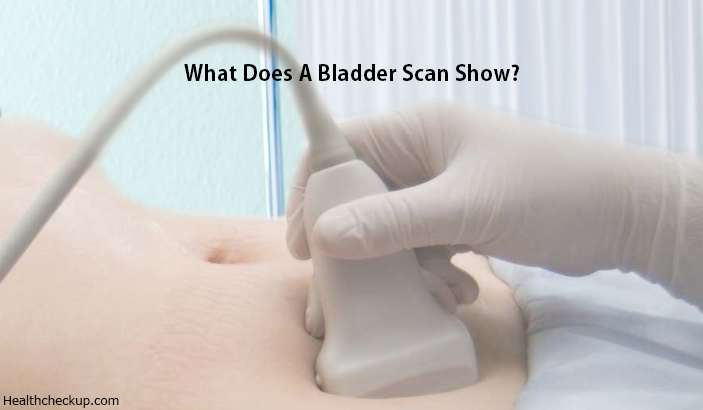When there is urinary retention a bladder scan is used to evaluate how much urine remains after you empty your bladder. A bladder scan procedure is comfortable and less risky than catheterization which has been used in the past.
Retention of urine in the bladder due to incomplete emptying can lead to health complications. The onset of this medically significant anomaly can be gradual or sudden. An ultrasound or CT scan is used in the bladder scan procedure.
What Does A Bladder Scan Show?
Bladder scan shows the bladder and the amount of urine left in the bladder after voiding. Urine left in the bladder is called Post Void Residue (PVR). During the bladder scan, your doctor may also note other abnormalities in your bladder that might not have raised medical problems yet. The good thing about modern bladder scans is that they are painless.
Bladder Scan Protocol
Your doctor will guide you on the preparation that you need to do before having a bladder scan. Usually, you will be required to urinate and empty your bladder to the best of your ability.
Once you have emptied your bladder, you will be asked to lie in a supine position on an examination bed or other suitable places. The medical practitioner carrying out a bladder scan on you will apply a gel onto your abdominal area and position themselves on your right.
By pressing an ultrasound probe gently into your abdomen and gently moving it around, medical practitioners are able to get an insight into how your bladder looks. If there is residual urine, the medical practitioner will see it as well. It is possible to estimate the volume of urine found in the bladder during a bladder scan.
How to Do a Bladder Scan (Procedure)
There are several steps in a bladder scan procedure. To do a bladder scan, each of the steps must e followed carefully. Your doctor or medical practitioner will guide you through the steps of a bladder scan procedure. They will also inform you about any preparations that you may need to do. The steps for medical practitioners to follow in doing a bladder scan are
- Turn on the bladder scanner system. This may be a CT scanner or an Ultrasound Scanner.
- For systems with operator authorization, log in to the system.
- Enter patient data into the system. This is usually information about the gender of the patient.
- Prepare the patient by having them lie in a supine position. Make sure to ask them to relax their abdominal muscles. Apply an ample amount of gel on the patient’s abdomen.
- Aiming towards the bladder, stand on the patient’s right hand side and place the scanner probe on the gel. Make sure to have the probe button facing the patient’s head directly. Avoid scanning the pelvic bone area by tilting the scanner probe slightly towards the tailbone of the patient.
- Start scanning by pressing the ‘scan’ button. Locate the bladder and get the most central and biggest image you can get on the ultrasound scanner screen. When you have this image, press the probe button to calculate urine volume. A beep is heard once the calculation is done.
- You may save the exam results for review and printing later on.
- Wipe the gel off the probe and the patient’s abdomen.
Once you are finished with your bladder scan, the results will be relayed to you. Doctors may want to go through the results before showing them to you. At the discretion of the doctor, he or she may tell you what they are seeing as they are carrying out a bladder scan on you.
Bladder Scan Results and Interpretation
The results of a bladder scan vary by patient. Bladder scan normal values form the baseline of interpreting the results of a bladder scan.
- A volume of 50ml of urine or less is considered to be adequate bladder emptying. This baseline rises to 100 ml in the elderly.
- A PVR volume of more than 200 ml is generally considered abnormal. It shows incomplete bladder emptying and warrants immediate medical attention. A PVR volume of 400 ml is considered high.
- Relief for high PVR volumes is by insertion of an in-and-out catheter.
Bladder Scan Risks
There are very few risks associated with bladder scanner use. A small possibility of misdiagnosis is seen in ultrasound bladder scans. When there are cysts and lesions near or on your bladder, they may be calculated as residual urine. This gives the doctor an untrue value of your PVR.
Bladder scan procedure that uses a CT scan may identify cancerous formations. Bladder cancer CT scan may be done as a standalone procedure and upon request by a doctor. It can be done without necessarily investigating PVR urine.
Dr. Himanshi is a Homoeopathic consultant and currently working as a lecturer in Post-graduate faculty of Homeopathy, Parul University, Vadodara. Completed BHMS and MD in Homeopathy in January 2018 and also has a clinical experience of about 6 years. Personal interests include reading, spending time with family and traveling.









